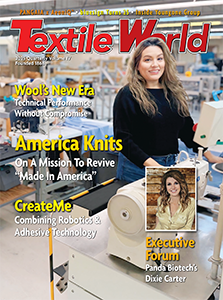GREENSBORO, N.C. — August 4, 2017 — Global leader of innovative and sustainable textile fiber solutions Unifi Inc. today announced the appointments of Richard E. Gerstein as executive vice president, global branded Premium Value Added (PVA) products and chief marketing officer; and John Vegas as executive vice president, global chief human resources officer, effective August 14th and 21st, respectively.
Commenting on the appointments, Unifi’s CEO Kevin Hall said: “Together Richard and John bring over 50 years of strategic experience to the team. We look forward to the insight they’ll provide as we continue to expand globally.”
Gerstein brings to Unifi thirty years of P&L and marketing expertise, and an ability to attract and build strong teams. He has served in executive roles for global companies including Procter & Gamble, Alberto Culver, Hewlett Packard, and Sears Holdings. Gerstein also sits on the advisory board of Motista, and served on the board of Lands’ End.
“Richard brings leadership experience in the U.S. and internationally as both a manufacturer and retailer,” said Hall. “He has a diverse skill base across strategic planning, marketing, digital, and partnership development, as well as valuable expertise driving growth in consumer products, technology, e-commerce, and retail.”
Vegas has over twenty years of global business experience, with his career encompassing multifunctional roles in human resources, general management, sales and retail operations for three Fortune 1000 companies. He is a skilled strategist who proactively builds and organizes teams to solve problems and accelerate business growth. Vegas serves on the Board of Trustees for The Nature Conservancy of Minnesota, North Dakota, and South Dakota.
“John has a strong track record of value creation through innovation, P&L management, and organizational development, as well as a diverse skill set across HR, sustainability and retail management,” said Hall. “We are excited by his ability to recruit and retain top talent, while also building scalable talent platforms in complex labor markets.”
Adding to Hall’s comments, Unifi Chairman James Mead stated: “Richard and John are excellent additions to our executive leadership team. Their experience will be invaluable as we continue to execute our strategic growth plan.”
Concurrent with these additions, Unifi announces the promotion of Mark McNeill to executive vice president, global innovation. Commenting on McNeill’s promotion, Hall said: “This promotion reflects Mark’s outstanding contributions and leadership in technology and innovation efforts at Unifi for the past 20 years. Mark will also continue to lead the expansion efforts of our Asia business unit as he has done so successfully over the past two years.”
The Unifi sales organization will continue to be led by Jay Hertwig on the global PVA business, and Allen Smith on the regional polyester, nylon, and dye operations.
The Company is proceeding with its search for a CFO to round out the executive leadership team and expects to announce that appointment shortly.
Posted August 4, 2017
Source: Unifi




